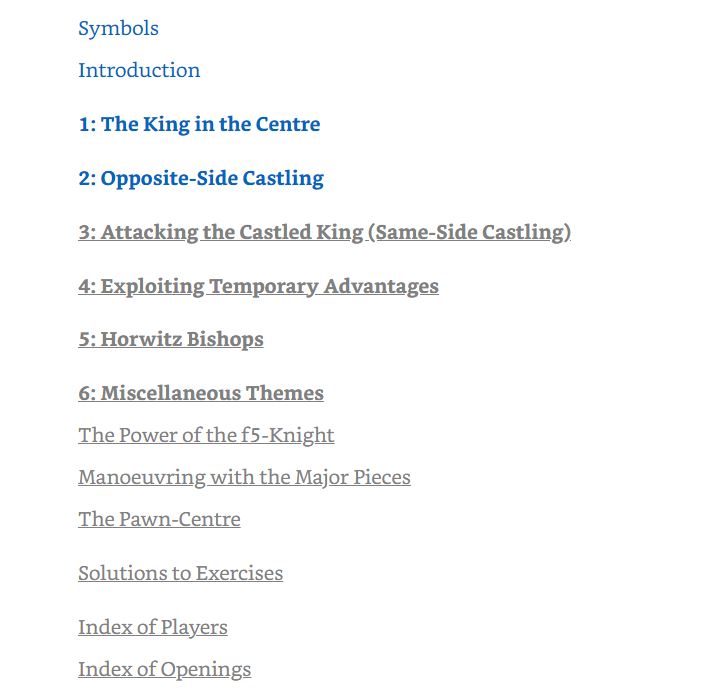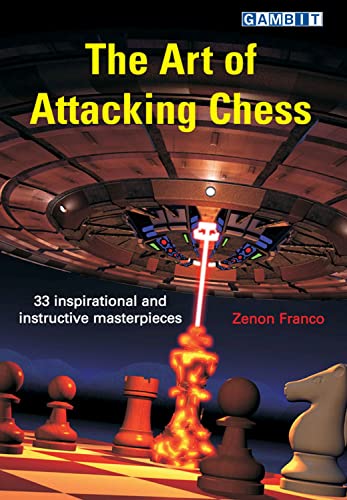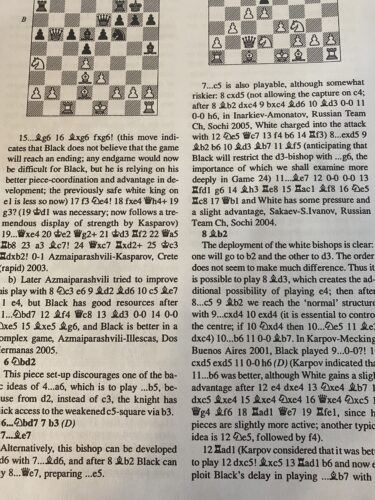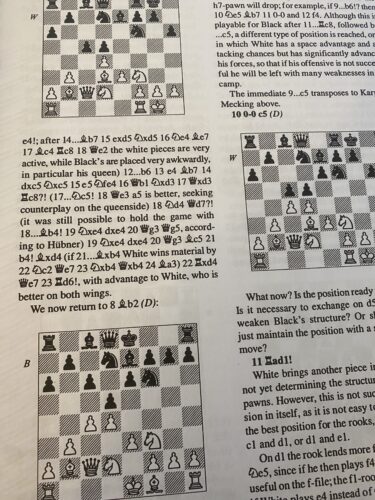Disclaimer 1: The following article contains several affiliate links to Amazon.com, meaning that if you go to Amazon and buy the recommended product (or some other product in an allotted period of time), the author of these lines will get a commission % from the purchase
Disclaimer 2: The following article is an excerpt from my article titled Best Chess Books 2022 in which I reviewed 20 chess books
The Art of Attacking Chess: Zenon Franco
What is the book about?
The year 2022 was one of the most successful years for me as a chess player. For the first time in years, I broke the 2200 ELO rating barrier again and even managed to reach my peak rating of 2250. 1
Still, since I hope this is not yet my peak performance, I am always looking for things to improve. And one trend I noticed while analyzing my most recent games – both on my own and with my coach – is my tendency to play very positional, controlled, „old men“ chess.
Therefore, in order to diversify my style and to make it more universal, in 2022 I embarked on the project of reading quite a few books focusing on the more dynamic, attacking element of our beloved game. Among other books, The Art of Attacking Chess by Paraguayan GM Zenon Franco was recommended to me by my coach. And it turned out to be one of the best recommendations for a chess book I have received.
As its title suggests, the topic of the book is attacking chess. Over the course of 6 chapters and 33 annotated model games, the author examines several very important and typical themes related to attacking play, such as:
- The King in the Centre
- Opposite-Side Castling
- Same-Side Castling

Thus, in contrast to some other books on attacking play such as The Art of Attack 2 or, say, Mating The Castled King, which have a heavy focus on concrete patterns and techniques that can be utilized when finishing the attack, The Art of Attacking Chess focuses more on the preparation and build-up leading to these final blows. 3 As the author himself emphasizes in the Introduction:
„ Referring to Alekhine’s extraordinary play, Spielmann once wrote, „ I can comprehend Alekhine combinations well enough, but where he gets his attacking chances from and how he infuses life into the very opening – that is beyond me.“ Achieving the positions where combinations are possible is indeed the most difficult task. In this book we shall not only see games with brilliant conclusions but also examine the different stages in the creation of these finishes.“
Why do I love this book?
Good question! In contrast to some other books on this list that delighted me with a particular aspect, say a novel book idea, freshness in the writing style, or absurd amounts of text, 4 The Art of Attack In Chess doesn’t have anything that immediately stands out about it. The reason why I love it is much more mundane and simple – it is simply a very good chess book that gets all 5 fundamentals just about right.
Let’s start with the structure and the organization of the material. The way the book is divided is very reasonable and sensible – and the topics that are covered seem very important and very relevant for practical play. 6 Every chess player is bound to find themselves in a position where the opponent has a king in the center or where the kings are castled on opposite sides. I also liked how the author provided the reader with a set of exercises related to the given topic after every chapter.
And even though some of these topics are covered in other books, I can’t recall when was the last time when it was done in such an elegant and logical fashion.
Another thing I really liked about the book are the games themselves. They are, first and foremost, very exciting and interesting, while at the same time retaining that instructive component that is important for a chess book. The author does a good job of illustrating several important sub-topics within the main topic and often references earlier games when analyzing the current one.
One thing I also like about the book is its objectivity. The author doesn’t tell us to attack at all costs, but tries to teach us under which circumstances is the attack well-timed, and under which it is premature. There are quite a few examples demonstrating the latter. I particularly enjoyed Game 21 from the chapter on Exploiting Temporary Advantages:
The amount and the style of textual explanations is also much higher than in your average chess book. 7 This is especially apparent in the introduction to every game, where the author foreshadows the important theme/several themes that the game illustrates – and also in the conclusion to every game where the author summarizes the lessons we can extract from it. Again – nothing extraordinary or out-of-this-world. But very solid and more than sufficient.
The analysis of the games, on the other hand, is the only issue I have with this book, due to its protracted nature. There are quite a few places in the book where the author embarks on lengthy explorations that take 10+ moves. And even though one could make an argument it is necessary for a book dealing with such a complex topic chess, more often than not I felt it was overdone. Especially since there are quite a few places where these analytical escapades are done very early in the opening – for example on move 8 of the game 23 on pages 131 and 132 of the book:
It is true that The Art of Attacking Chess contains more diagrams and better-placed diagrams than your average chess book. But due to the prolonged nature of the analysis, it is still impossible to fully follow the book without the use of the board – or to follow the subvariations in your head when going through the main line on the board.
Alas, in regard to this, I have a very clear bias – if I like the book in general, I will not have that many problems with the fact I need to use the board to read it. But if I don’t like it, then all the other aspects of the book will be more bothersome, as well.
Fortunately, The Art of Attacking Chess is the case of the former. I don’t think that these editing limitations are sufficient to negate the fantastic and instructive content that the book contains and I can only wholeheartedly recommend it!
- And then briefly losing 30 points and gaining 20 of them back to end the year around 2240
- Which is often confused with this one, btw.
- That is not to say that these books don’t provide the reader with general themes. But I would say the emphasis in these books is not per se on the themes themselves, as much as it is within The Art of Attacking Chess
- As in the case of How To Play Equal Positions
- or almost all
- This is not always the case with chess books.
- Although still not as gargantuan as in How To Play Equal Positions



